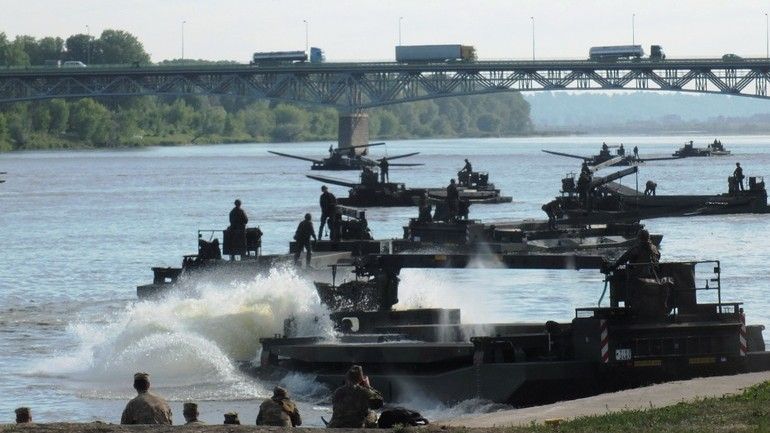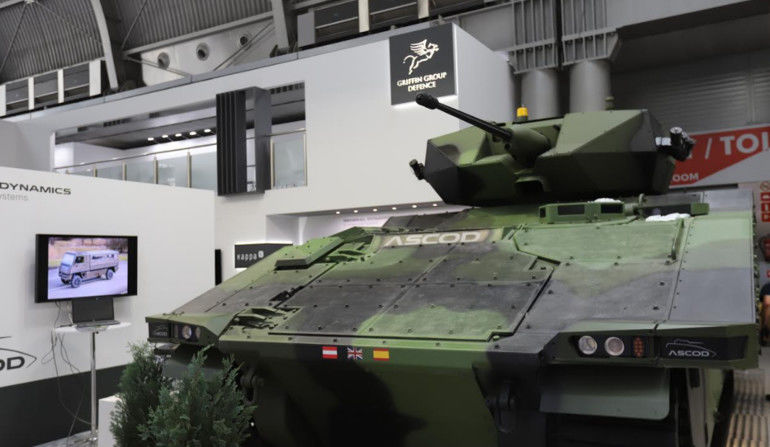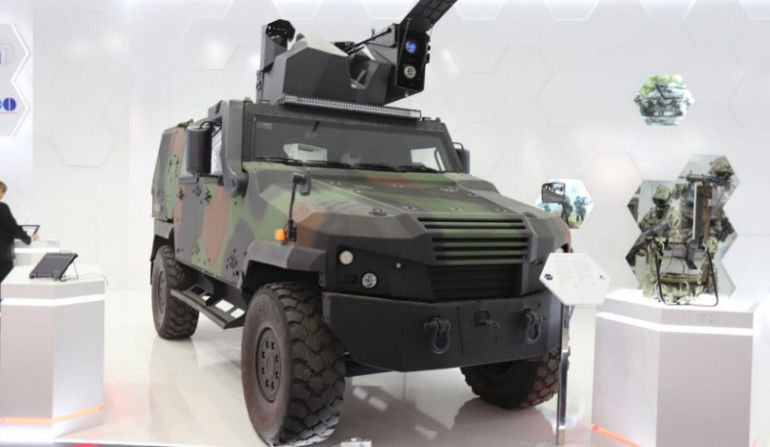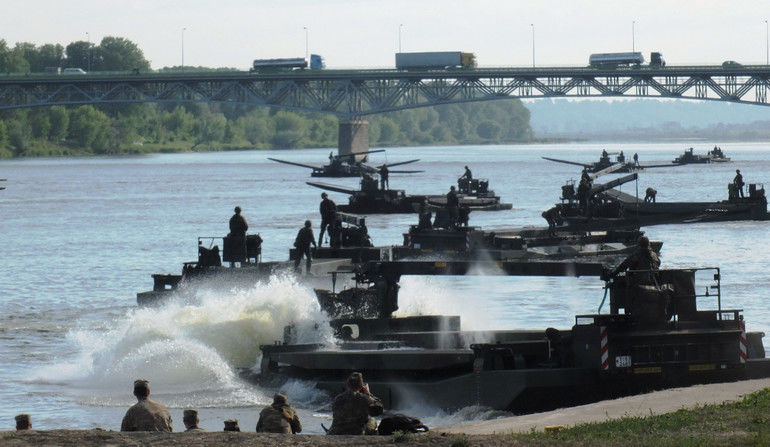
Eagle, ASCOD and MTB Bridges Presented in Kielce
General Dynamics Land Systems company (GDELS) has presented the ASCOD IFV, Eagle vehicle and the MTB (Medium Trackway Bridge) system during the MSPO exhibition in Kielce this year. All of the aforesaid solutions use principles of modular design and may be tailored to deal with a variety of tasks and user requirements.
ASCOD IFV was one of the exhibits presented by GDELS in Kielce. The design concept allows for rapid reconfiguration of the vehicle to meet the evolving requirements of the military. Here, higher back section of the hull is a good example, providing more comfort for the soldiers, with the compartment being spacious enough to embed new or planned systems that would support the troops.
A similar situation occurs in case of the offered rubber tracks that are lighter and cheaper than e.g. steel Diehl 464 continuous track, used on this vehicle, however in some terrain conditions the rubber tracks may wear out quicker. The buyer is to decide which solution would meet his requirements.

ASCOD, showcased during the MSPO exhibition, had a weight of 36 tonnes, and was featuring extensive modular ballistic and IED protection, while its gross weight rating may go up to 42 tonnes. The platform featured the Israeli Plasan armour. Almost fully equipped and armed vehicle still offers 6 tonnes of modernization weight reserve or free space to install extra systems. ASCOD IFV is the primary vehicle of the British SCOUT SV family. It is also being offered to the Polish and Czech Armed Forces.
It may use a variety of armament systems, including Israeli 30 mm turret modules, or the heavier AJAX turret with a 40 mm cannon. The modular architecture of the vehicle makes it possible to install and expand the armour, armament and equipment packages.

Eagle platform’s design, with the car also being presented in Kielce, assumes that it is possible to create a number of specialized versions of the vehicle. A platform featuring the Samson Mini MLS remote control weapons module with a Spike ATGM launcher integrated, presented within the PGZ hall by the Rosomak S.A. company, may be used as a good example here.
In this way, a patrol vehicle still retains an ability to act against heavily armoured threat, including main battle tanks. Eagle is offered for the Polish Armed Forces within the framework of the Pegaz programme.

The Eagle vehicle demonstrated by GDELS outdoors featured the MTB (Medium Trackway Bridge) module and a remote control weapon station with a machine gun and ATGM launcher. The MTB’s light aluminium structure allows for creation of bridges of lengths ranging from 4 to 8 metres and with capacity of MLC 40, which allows for carrying tracked vehicles weighing up to 36 tonnes (including IFVs). At the same time, MTB may be used in case of light platforms.
Moreover, GDELS also proposes the Improved Ribbon Bridge (IRB), to be acquired by the Polish Forces. The system undergoes regular modifications so that it meets specific requirements of the military. The latest variants allow for creation of 210 metres long MLC80 bridge, or 6 ferry-like platforms. In case when a ferry package is being created out of two sections, only 3 minutes are required to assemble a “ferry” as such. The ramp structure makes it possible to go over banks that are more than 2 meters higher than the water level (30% slope).
M3 is another bridge system offered by GDELS. It is used by NATO member states, including the UK and Germany. M3 has been used to create a 350 metres long bridge during the Anakonda 2016 exercise by a joint British-German element. This was the longest M3-system based bridge in history.

The representatives of the GDELS company place an emphasis on the fact that they are willing to deliver equipment for the Polish military in collaboration with the domestic industry, also with involvement of other states of the region, for example within the framework of the Visegrad Group.
WIDEO: Defence24 Days 2025: Premier Defence & Security Conference in CEE